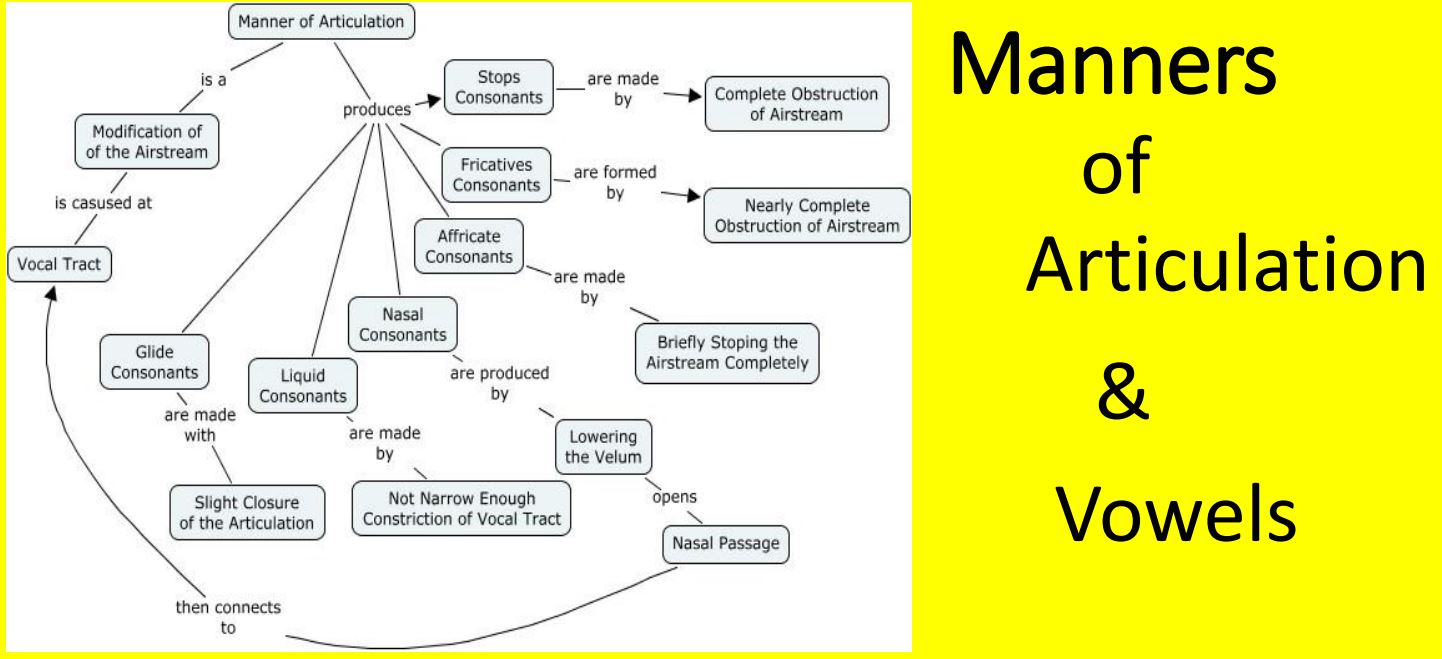National University of Pakistan
Manners of Articulation in
Linguistics
🗣️ What Are Manners of Articulation?
When we speak, our vocal tract—mouth, tongue, lips, and more—works like a finely tuned instrument. The manner of articulation refers to how airflow is manipulated as it moves through the vocal tract to produce different speech sounds. It's one of the key ways to describe and categorize consonants in phonetics.
Let’s break down the main types:
🔍 Major Manners of Articulation:
-
Stops (Plosives)
💨 Airflow is completely blocked for a moment, then released suddenly.
Examples: /p/, /b/, /t/, /d/, /k/, /g/ -
Fricatives
🌬️ Air passes through a narrow constriction, creating friction.
Examples: /f/, /v/, /s/, /z/, /ʃ/ (sh), /ʒ/ (as in measure) -
Affricates
💥 A stop followed by a fricative—starts with a full block, ends in a hiss.
Examples: /ʧ/ (ch), /ʤ/ (j as in judge) -
Nasals
😌 Air flows out through the nose instead of the mouth.
Examples: /m/, /n/, /ŋ/ (as in sing) -
Liquids
🌊 Smooth, flowing sounds where air moves around the sides of the tongue.
Examples: /l/ and /r/ -
Glides (Semivowels)
🎵 Sounds that are almost like vowels, with minimal constriction.
Examples: /w/, /j/ (as in yes) -
Flap/Tap
⚡ A quick flick of the tongue against the roof of the mouth.
Example: The American English t in butter
💡 Why It Matters
Understanding manners of articulation helps learners master pronunciation, linguists analyze language systems, and even AI developers build better speech recognition tools.
Whether you're a language nerd or just curious about how sounds work, it’s pretty fascinating how much nuance goes into the words we say every day.
Let me know if you'd like a more visual version or a beginner-friendly infographic style!

إرسال تعليق